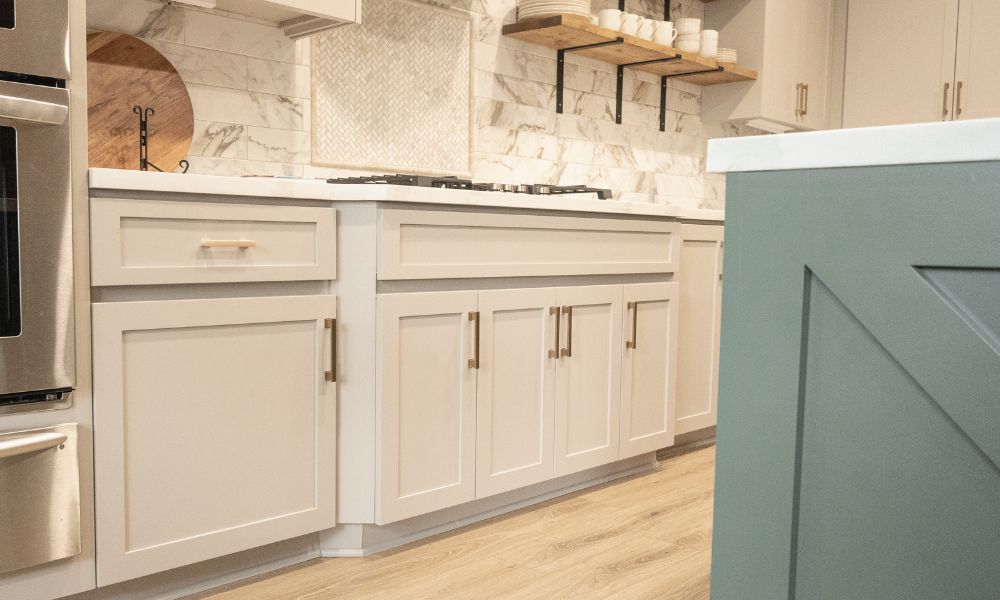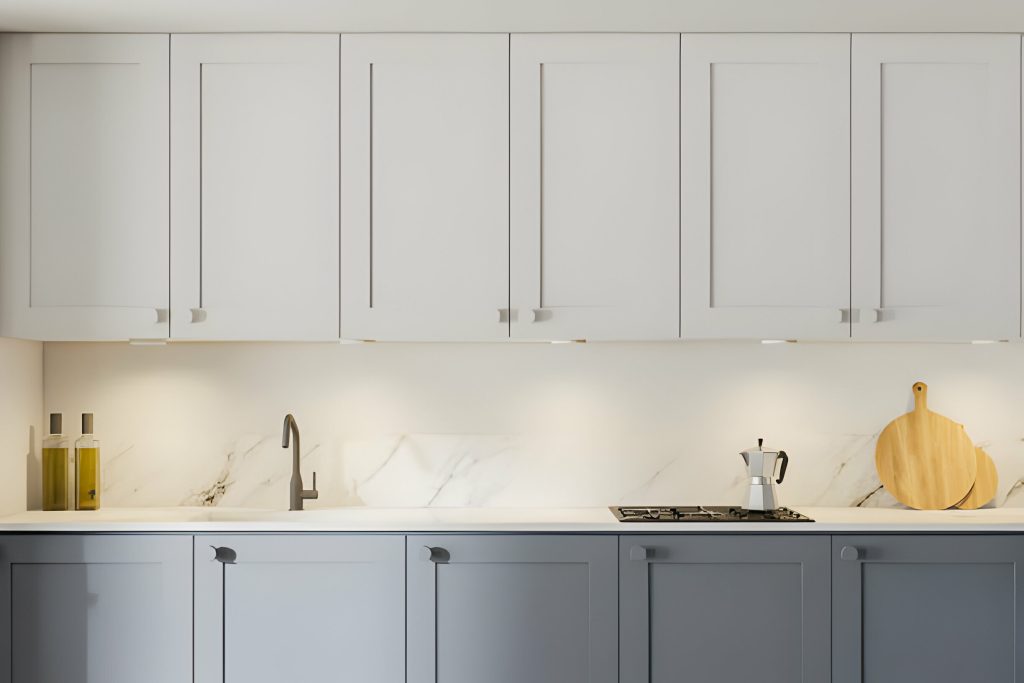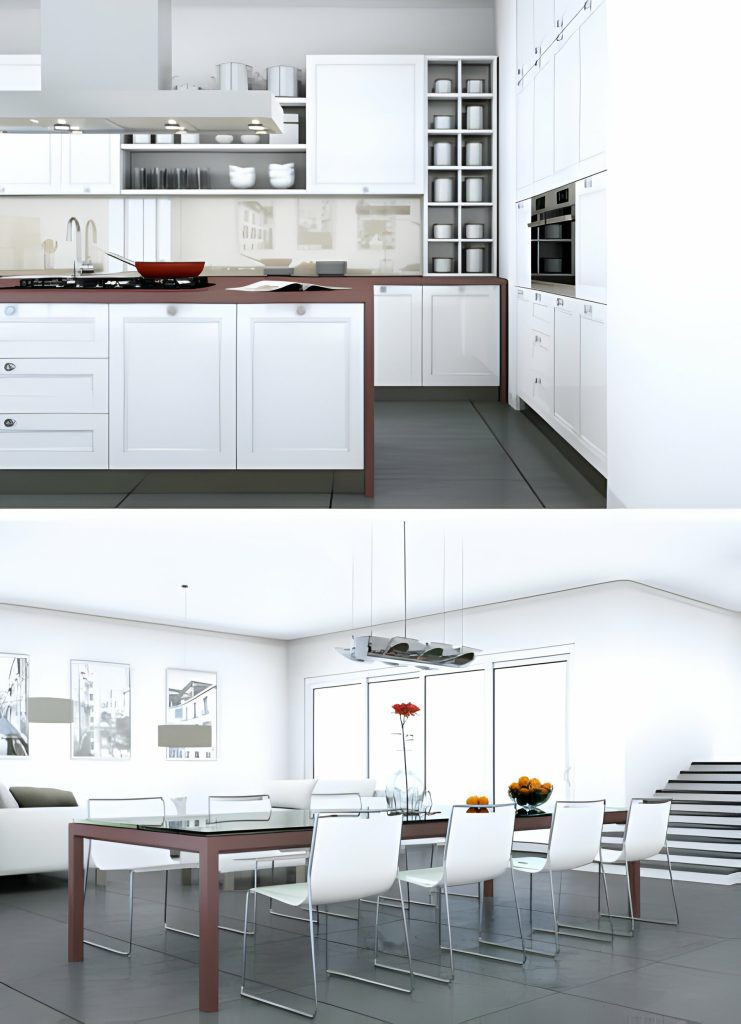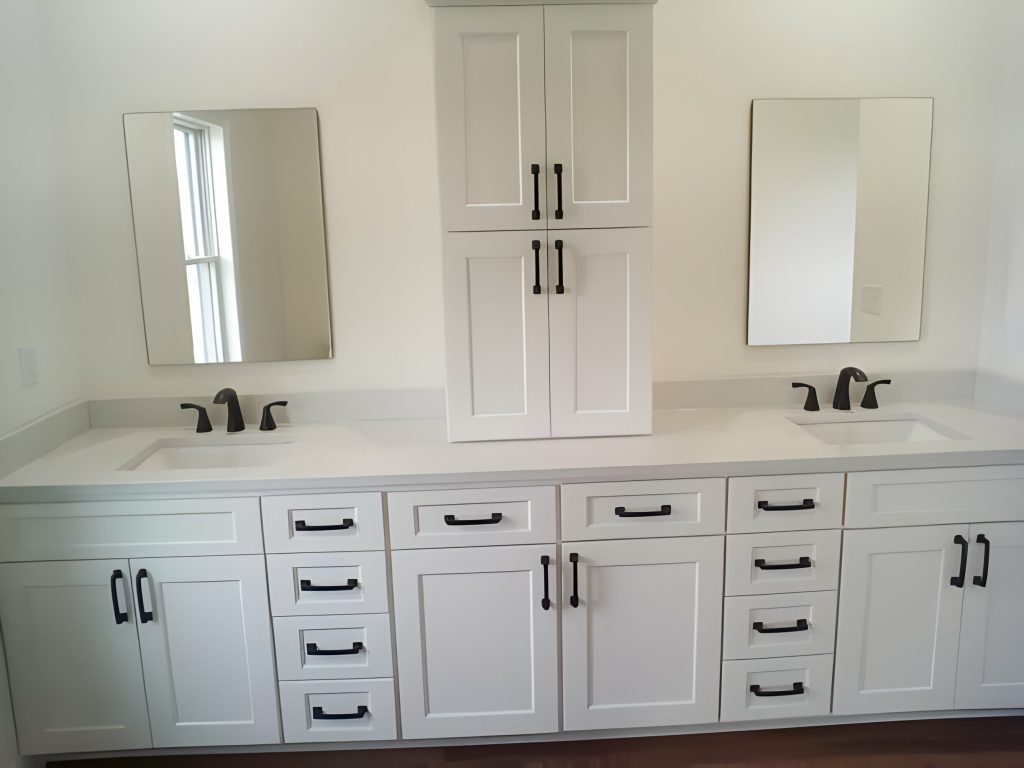As you stand before your kitchen cabinets, envision the transformation that awaits by choosing between raised panel and flat panel doors. The subtle nuances in design can elevate the ambiance of your space, but how do you decide which style suits your taste and lifestyle best? Understanding the distinctions between these door types goes beyond aesthetics; it influences the overall feel and functionality of your kitchen. Let’s explore the intricate details that set these two cabinet door styles apart and help you make a well-informed decision for your home.
Raised Panel Cabinet Doors Overview
When considering cabinet door styles for your kitchen, the raised panel cabinet doors stand out for their distinct feature of a raised center panel surrounded by a frame. Raised panel doors differ from flat panel doors in design, cost, maintenance requirements, and style preferences. Design-wise, raised panel doors offer a classic, sophisticated look, ideal for traditional or classic kitchen designs, while flat panel doors are more suited for modernizing kitchen aesthetics with their sleek appearance. In terms of cost, raised panel doors tend to be more expensive due to their intricate construction, while flat panel doors are usually less costly, making them a better fit for budget-conscious projects.
Maintenance requirements for raised panel doors include regular upkeep to prevent dirt buildup due to the additional ridges and edges, while flat panel doors are easier to clean and maintain, suitable for busy households. When it comes to style preferences, raised panel doors provide a timeless and elegant look, offering customization options with paint or stain, whereas flat panel doors lack the intricate details of raised panel doors but provide a modern and streamlined aesthetic. Consider these factors to choose the best cabinet door style that aligns with your kitchen design vision and maintenance capabilities.
Features of Raised Panel Doors
The raised panel doors exhibit panels that are elevated above the door frame, providing a vintage, traditional, and rich appearance to cabinetry. When considering raised panel doors, here are some key features to take into account:
- Design Versatility: Raised panel doors offer a classic and sophisticated look that can be customized with various paint or stain options. The panels add texture and depth to cabinetry, enhancing the overall aesthetic of the kitchen.
- Maintenance Requirements: While raised panel doors exude elegance, they do require regular maintenance to prevent dirt buildup. The intricate construction of these doors may make cleaning a bit more challenging compared to flat panel doors.
- Cost Comparison: Raised panel doors are generally more expensive due to their premium design and high-quality materials. When considering these doors, it’s essential to weigh the cost against the long-term durability and aesthetic appeal they provide.
When selecting raised panel doors, keep in mind their design versatility, maintenance requirements, cost comparison, customization options, and long-term durability for a well-informed decision.
Pros of Raised Panel Doors
To fully appreciate the benefits of raised panel doors, it is crucial to understand their artistic craftsmanship and luxurious appeal in enhancing the overall ambiance of a space. Raised panel doors offer design versatility, allowing for intricate and customizable options that can elevate the aesthetic of any kitchen. Their long-term durability ensures that they maintain their elegance over time, making them a worthwhile investment. With various customization options such as paint or stain choices, raised panel doors can be tailored to suit individual preferences and design schemes. While they may require regular maintenance to prevent dirt buildup, their timeless beauty and luxurious look make them a popular choice for those seeking a sophisticated kitchen design. Despite potentially higher cost considerations compared to flat panel doors, the craftsmanship, elegant options, and flexible designs available with raised panel doors make them an excellent choice for those looking to add a touch of grandeur to their living space.
Cons of Raised Panel Doors
Considering the luxurious appeal and design versatility of raised panel doors, it’s important to acknowledge that these doors may pose challenges in terms of maintenance, cost, and overall compatibility with modern kitchen designs.
- Maintenance Challenges: Raised panel doors have intricate designs with crevices that can collect dust and grime, requiring regular cleaning and maintenance to prevent buildup. Polishing and sealing these doors can also be more labor-intensive compared to simpler door styles.
- Cost Comparison: Raised panel doors are typically more expensive than flat panel or shaker style doors due to their premium craftsmanship and intricate detailing. This higher cost can make them less ideal for budget-conscious projects or renovations.
- Design Versatility: While raised panel doors offer a classic and sophisticated look, their ornate design may not align well with modern, minimalist kitchen aesthetics. Balancing the elaborate nature of raised panel doors with a more streamlined kitchen design can be a challenge, limiting their versatility in contemporary settings.
Flat Panel Cabinet Doors Overview
When exploring cabinet door options, understanding the characteristics of flat panel doors is crucial for making informed design decisions. Flat panel cabinet doors, also known as Shaker style doors, are favored for modern kitchens and complement farmhouse designs. These doors typically feature a simple or no border, lack intricate details or ornamentals, and display right angles and straight lines, providing a clean and streamlined look. In terms of design trends, flat panel doors are popular for their aesthetic appeal and suitability for modern and minimalist kitchen styles. Material choices for flat panel doors vary, with options like plywood, laminate, or solid wood, offering different stylistic features. Cost comparison wise, flat panel doors are generally less expensive than raised panel options. Maintenance tips include easy cleaning and minimal upkeep due to their simple design, making them suitable for busy households. Moreover, customization options for flat panel doors allow for different hardware choices to enhance their appearance and suit various design preferences.
Features of Flat Panel Doors
Flat panel doors in kitchen cabinets typically showcase a minimalist design with straight lines and right angles, creating a clean and streamlined aesthetic. When considering flat panel doors for your kitchen, here are some key features to keep in mind:
- Clean Design: Flat panel doors offer a sleek finish with simple lines, perfect for achieving a modern appeal in your kitchen space.
- Easy Maintenance: These doors are easy to clean and maintain, making them ideal for busy households looking for a low-maintenance option.
- Versatile Style: With their minimalist design, flat panel doors can adapt to various kitchen styles, providing a versatile canvas for your kitchen design.
Pros and Cons of Flat Panel Doors
To further explore the practical aspects of flat panel doors, it’s essential to weigh their advantages and disadvantages in the realm of kitchen cabinet design. Flat panel doors offer easy maintenance and cleaning methods, making them suitable for busy households. They are cost-effective compared to raised panel doors, fitting well into budget considerations. While they lack the intricate details of raised panels, flat doors provide design versatility and customization options, ideal for modern aesthetics. However, their durability factors may raise long-term considerations as they are less stable and more prone to warping over time. When deciding between flat panel and raised panel doors, consider the balance between modern and traditional aesthetics, with flat panels leaning towards a sleek and streamlined look. Ultimately, the choice between flat panel doors and raised panel doors depends on your preference for design, maintenance needs, and the overall style of your kitchen.



